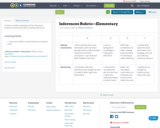
A rubric in student language used by elementary students to assess their skills at making inferences.
- Subject:
- English Language Arts
- History
- Social Science
- Material Type:
- Assessment
- Date Added:
- 07/03/2017

A rubric in student language used by elementary students to assess their skills at making inferences.
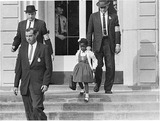
Goal/Objective:The students will construct meaning of an informational text while developing a multicultural perspective. Overview:This comprehension lesson focuses on a variety of reading skills, including making predictions and inferences, comparing/contrasting, answering inferential/critical questions, applying context clues and word structure to determine the meaning of words, and making text-to-self/text-to-world connections. All of these skills are taught alongside students learning about the Civil Rights Movement, the impact it has had on our nation, and the importance behind the story of Ruby Bridges.Grade Level:This lesson focuses on 4th grade standards, but can be adapted for any upper elementary classroom. Modifications/Accommodations:This lesson can be modified/accommodated for students with special needs. The lesson is derived from the ReadWorks.org website. If teachers create a free account to the website, students can have the passage, as well as the comprehension questions, read aloud to them.
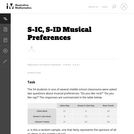
The basic idea of this task is for students to demonstrate that they know what it means for two variables to be associated.
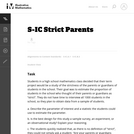
In this task students design a plan to conduct a random sample of the students in their school to estimate the proportion of students who think their parents are strict.

Included are two lessons to help sixth grade students gain a beginning understanding of how to cite evidence and make inferences. This is one lesson I will use prior to beginning expository writing. Students should already have knowledge of context clues.
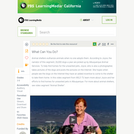
Animal shelters euthanize animals when no one adopts them. According to Joyce, the narrator of this segment, 26,000 dogs a year are picked up by Albuquerque Animal Services. To help find homes for the unwanted pets, Joyce, who is also a photographer, takes pictures of the dogs and posts the pictures on the Internet. She hopes when people see the dogs on the Internet they have an added incentive to come to the shelter to take them home. In this video segment from WILD TV, learn more about Joyce and her efforts to find homes for unwanted pets in Albuquerque. For more about animal shelters, see video segment "Animal Shelter".
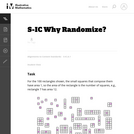
This exercise demonstrates that judgment (non-random) samples tend to be biased in the sense that they produce samples that are not balanced with respect to the population characteristics of interest.